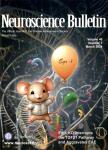Biomaterials for spinal cord repair
Biomaterials for spinal cord repair作者机构:Departments of BioengineeringUniversity of Pittsburgh Departments of the Center for the Neural Basis of Cognition University of Pittsburgh Departments of Physical Medicine and RehabilitationUniversity of Pittsburgh Departments of NeurobiologyUniversity of Pittsburgh
出 版 物:《Neuroscience Bulletin》 (神经科学通报(英文版))
年 卷 期:2013年第29卷第4期
页 面:445-459页
核心收录:
学科分类:0710[理学-生物学] 1002[医学-临床医学] 1001[医学-基础医学(可授医学、理学学位)] 08[工学] 0805[工学-材料科学与工程(可授工学、理学学位)]
基 金:supported by the Wings for Life Foundation Contract #: WFL-US-004/12
主 题:spinal cord injury axon regeneration biodegradable materials extracellular matrix proteins functionalrecovery growth factor guidance injury and repair spinal motor neuron
摘 要:Spinal cord injury (SCI) results in permanent loss of function leading to often devastating personal, economic and social problems. A contributing factor to the permanence of SCI is that damaged axons do not regenerate, which prevents the re-establishment of axonal circuits involved in function. Many groups are working to develop treatments that address the lack of axon regeneration after SCI. The emergence of biomaterials for regeneration and increased collaboration between engineers, basic and translational scientists, and clinicians hold promise for the development of effective therapies for SCI. A plethora of biomaterials is available and has been tested in various models of SCI. Considering the clinical relevance of contusion injuries, we primarily focus on polymers that meet the specific criteria for addressing this type of injury. Biomaterials may provide structural support and/or serve as a delivery vehicle for factors to arrest growth inhibition and promote axonal growth. Designing materials to address the specific needs of the damaged central nervous system is crucial and possible with current technology. Here, we review the most prominent materials, their optimal characteristics, and their potential roles in repairing and regenerating damaged axons following SCI.



